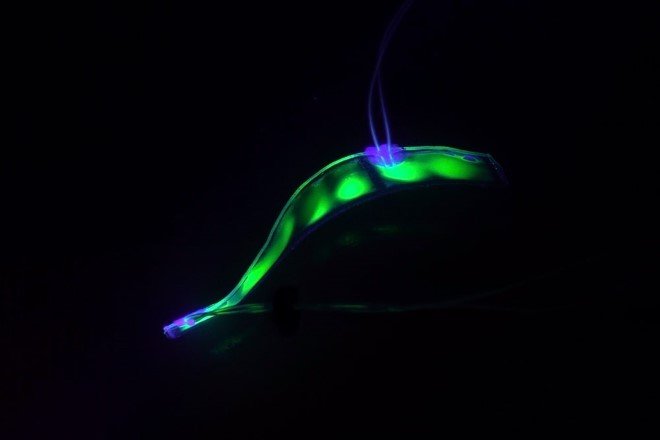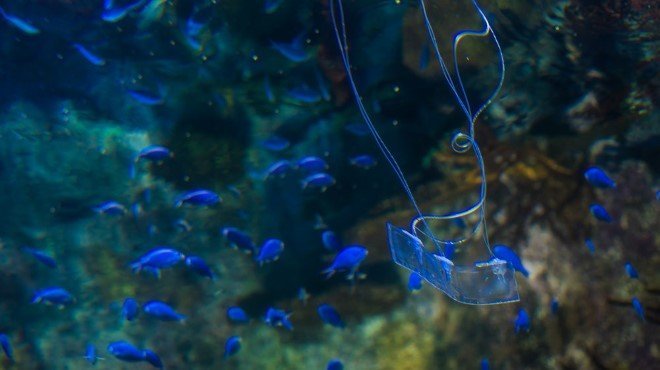This transparent robotic eel will aid researchers in underwater explorations

Scientists have explored the deep waters for years. However, the machinery used to examine marine life tends to be loud and quite obtrusive. This tends to scare the fishes away. However, scientists from the University of California San Diego have a solution to the problem and it looks like a transparent eel.
This soft and cushiony piece of technology stretches out to 0.3 meters (1 foot) and provides silent motility underwater. The researchers got their inspiration from eel larvae, which is transparent in nature. This prototype works best in salt water only and interestingly, does not require a motor. Instead, it moves with the help of its water-filled elastic artificial muscles, made by an elastomer. These muscles move with the help of electricity, supplied via cables that source out from an electronics unit located on the surface. The model provides positive charge to the water pockets located in the muscles and negative charge to the surrounding water, resulting in a to and fro motion of the muscles, allowing the robot to swim at 1.9 mm/sec.

Image Credit: UC San Diego Jacobs School of Engineering
One might be alarmed to think that a negative electric charge would persist in the water and harm aquatic beings. However, it’s a very minute current and organisms can swim through it with ease. The prototype has already passed its test run at the UC San Diego’s Scripps Institute of Oceanography, where it swam in tanks containing a multitude of marine life including jellyfish, coral and other fishes.
With the success of their first test, the scientists are now on a mission to improve the technology’s shape and consistency. They also plan to give it a functional stabilizer. If everything goes well, the technology could also come with a head containing cameras and other sensors for improved performance and record keeping.
UC San Diego’s Prof. Michael T. Tolley, said in an interview, “Our biggest breakthrough was the idea of using the environment as part of our design. There will be more steps to creating an efficient, practical, untethered eel robot, but at this point we have proven that it is possible.”
The professor, along with his team has also published their paper in the journal Science Robotics. This eel could be a giant breakthrough in marine life exploration!
Source: UC San Diego Jacobs School of Engineering (via: New Atlas)